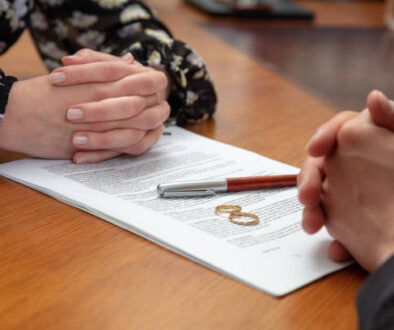Valuing pension rights on divorce
Pension rights in divorce or dissolution settlements can often amount to the largest asset after the equity in the family home.
Complications inherent in valuing pension rights are increased by the large number of different pension arrangements which exist. There are several sources of pension income including:
- The Basic State Pension
- The Additional State Pension.
- The New State Pension.
- Defined Benefit Scheme – a scheme in which the benefits payable on retirement are defined and generally by reference to length of service and final salary.
- Personal Pension Plan or “Stakeholder” Pension Scheme.
The sum which the parties will wish to take into account in a settlement is the current capital value of part or all of a divorcing spouse’s income stream after retirement.
The Basic State Pension
This is received by those who reach state pension age before 06.04.16. Although the amounts involved can be relatively small, the calculation of the amounts due under the Basic State Pension can be complex.
Couples who divorced before 06.04.16 may, in certain circumstances, use the contributions record of their former spouse or civil partners National Insurance contributions to increase the amount of their basic state pension. The expected state benefits and the changes which result from the divorce may therefore need to be brought into the calculation of the total pension benefit for one or other of the former spouses.
The Additional State Pension
Those retiring before 06.04.16 may have been entitled to the Additional State Pension. For those couples divorcing before 06.04.16, the Additional State Pension could have been shared as part of the financial settlement through a Pension Sharing Order.
The New State Pension
This can be claimed by those with a state pension age on or after 06.04.16.
The New State Pension cannot ordinarily be shared upon divorce or the end of a civil partnership.
Defined Benefit Schemes
These schemes specify a predetermined level of retirement benefit, usually calculated by reference to length of service and the level of salary in the final year or years before retirement.
Many of these schemes include widow’s pensions as a benefit in addition to a retirement pension for the member of the scheme. It will be necessary to calculate the present value of the widow’s pension and to also take into account the benefit which a divorcing party might have expected to have enjoyed from the spouse’s pension during the spouse’s retirement.
Personal Pensions
Holders of a personal pension make contributions to funds which are normally managed by pension providers such as insurance companies. The level of benefits of these pensions depends upon the accumulated value of the contributions paid to them.
Pensions After Divorce
The options open to divorcing couples are to either offset the value of pension rights against other assets i.e. one party retains the pension rights but the other party takes a greater share of the equity in the family home or the pension rights may be divided either by earmarking or pension sharing.
Earmarking allows a Pensions Attachment Order to be made now against pension income arising on retirement.
Pension sharing allows parties on divorce or dissolution of a civil partnership, to have retirement benefits in their own right.
For further information please contact Susannah Taylor.
This article is not intended to be comprehensive or to provide specific legal advice. It should not be relied upon in the absence of specific advice given in relation to particular circumstances.




